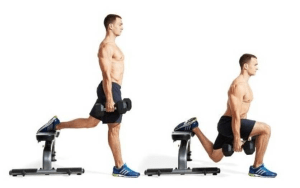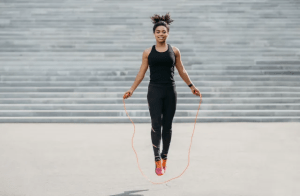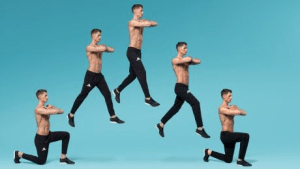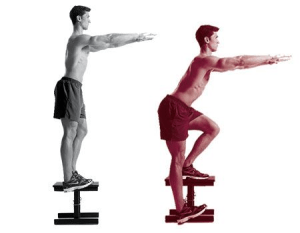Will strength training help or hinder me with running?
Earlier in our running series we talked about how running is a single leg exercise, and a very demanding one. Up to 8x body weight of force going through each leg, one at a time, thousands of times over during a longer run. Strength training and other complimentary exercises types will absolutely be a good idea for injury prevention and improving efficiency.
In this article we will touch on how to incorporate strength training into your running routine, including how much and what types of exercises you can do to enhance performance and prevent injuries.
How often should I train besides running?
Most runners would benefit from strength training 2-3x a week, with runs either on same days or alternate days. Just ensure that any heavy/fatiguing sessions are not completed in the few hours before a run. For those who have competition or events upcoming, tapering to one session a week leading up to the event will make sure there is enough recovery time.
What type of training should I be focusing on?
Because running is already your endurance-based exercise, you will want to focus the rest of your time on the other areas listed below.
Since we run one leg after the other, unilateral (one leg) exercises are more beneficial for improving your running than bilateral exercises. This means your regular barbell back squat may not be the best choice.
Balance and Stability – important for the foot, ankle, knee, hip and core to all be working together to create better efficiency and control during all those running steps.
Heavy Strength– running is pretty much a controlled version falling, and each step requires absorbing a high amount of force. To train for this we need exercises that feel heavy and challenge us to recruit as many muscle fibres as possible, reaching fatigue in less than 8 reps.
Plyometrics (explosive/elastic movement) -very helpful for runners to develop the natural elastic capabilities of our tendons for absorbing and transferring running forces.
Example Exercises
There are thousands of choices but below are some fairly accessible ones in terms of equipment, only needing a bench or small step and have very transferable benefits to running.
Balance and Stability
Single Leg Step Down – This exercise incorporates a strength as well as the balance components. Standing on a box or step with one foot, lower the floating heel to the floor and power back up. Difficulty increases the higher the box, best to start at a height a little lower than halfway between the floor and your knee. Focus should be on slow controlled lowering for about 3 seconds. Hips should stay level, rather than one side dropping. When lowering the knee should be tracking in the same direction as to where the toes are pointed, not turned inwards or outwards. Train both sides 3sets 8-12 reps.
Heavy Strength

Split Squat with Rear Foot Elevated – Rear foot resting on a bench behind with toes pointed, 90% of your weight on your front leg, bending the front knee until thigh is parallel to the floor. Some may need to start with the front foot further forward to get the thigh to parallel. Focus on keeping your hips level. The front knee and toe should be pointing in the same direction. Pause at the bottom for at least 3 seconds between each rep. Can be done with bodyweight only or add dumbbells/ heavy backpack. Remember we are targeting strength with this exercise, should be heavy enough to be difficult completing 6-8 reps at 3 sets.
Plyometrics
Most sports where running, jumping and change of direction is required, involve plyometric movement, making it one of the more important areas to devote training time. When starting up a running regimen, adding plyometrics is essential for getting tendons and muscles ready for quick impacts. But if you are already running a high number of kilometres each week, one session a week would be good enough. Always progress things slowly and listen to your body.
I’m just starting out.
 Skipping Rope – If you don’t have a skipping rope, hopping on the spot is fine. Start with two feet. Your hops should feel quick and effortless, the aim is not to go high but just enough to clear the rope or get a few centimetres off the ground. You should remain on the balls of your feet throughout the exercise. Your hips, knees and ankles will all be absorbing impact together but there shouldn’t be a large range of motion happening at any joint. Reps can range from 20 to 100 for up to 3-5 sets depending on your ability.
Skipping Rope – If you don’t have a skipping rope, hopping on the spot is fine. Start with two feet. Your hops should feel quick and effortless, the aim is not to go high but just enough to clear the rope or get a few centimetres off the ground. You should remain on the balls of your feet throughout the exercise. Your hips, knees and ankles will all be absorbing impact together but there shouldn’t be a large range of motion happening at any joint. Reps can range from 20 to 100 for up to 3-5 sets depending on your ability.
Progressing plyometrics must be done slowly and works best under the guidance of someone with a strength and conditioning background, like our physios at PhysiCo City! Below is a great intermediate plyometric exercise for running and other sports.
 Split Stance Jumps – Start in a lunge position and try to jump and leave the ground. While in the air switch the font leg for the back leg and land in a lunge position again. Absorb the energy of the jump on landing and then immediately try to jump up again. Your knee should not hit the ground. Continue for 10-20 reps. Can be done at medium intensity not going for max height, or trying to get high as possible if you want more difficulty.
Split Stance Jumps – Start in a lunge position and try to jump and leave the ground. While in the air switch the font leg for the back leg and land in a lunge position again. Absorb the energy of the jump on landing and then immediately try to jump up again. Your knee should not hit the ground. Continue for 10-20 reps. Can be done at medium intensity not going for max height, or trying to get high as possible if you want more difficulty.
If you’d like an expert opinion on your running training, or a personalised training programme, come in today! You can book online with one of our experienced physiotherapists, or give us a call on (02) 9267 3775.


